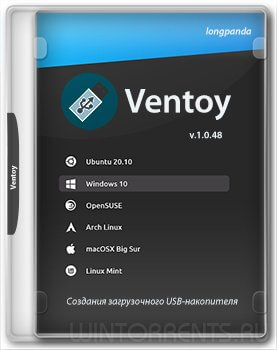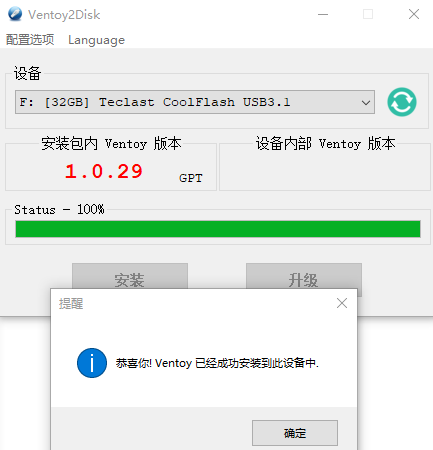
Extract the ISO's contents to the Target's root partition.
Ventoy ubuntu archive#
Ventoy ubuntu install#
If you like learning experiences, you can create a multi partition, persistent USB that can install Ubuntu, from scratch. ¹ You can alter all the entries an leave the rest untouched, in my example I'm simplifying.

Ready, you have now an EFI/i386 bootable pendrive with the partitions you created.

g use GPT partition style, default is MBR style (only for install) s enable secure boot support (default is disabled) r SIZE_MB preserve some space at the bottom of the disk (only for install) I force install ventoy to sdX (no matter installed or not) i install ventoy to sdX (fail if disk already installed with ventoy) Sudo bash /opt/ventoy-1.0.61/Ventoy2Disk.sh -I -g /dev/sdbįollowing, the list of parameters provided by Ventoy2Disk.sh: Ventoy2Disk.sh CMD /dev/sdX To create a bootable USB mapped as /dev/usb (always use lsblk to identify correctly your USB disk!) with a GPT partitioning, you can run Now, you need to give permissions to at least Ventoy2Disk.sh and VentoyGUI.x86_64: Sudo tar xzf ventoy-1.0. -C /optĬonsidering the meaning of /opt folder, I think that /opt is the best choice in terms of destination folder. tar.gz version (I'll refer to version 1.0.61 in the following examples), you can extract it by issuing in the terminal:
Ventoy ubuntu download#
Ventoy does not come in a deb format or with an installation script, so you need to download Ventoy from the release page. When I open it via Nautilus, it is like a normal USB stick where you can put your files (screenshot taken from my Ubuntu 20.04): This means that when I use this USB stick as a bootable drive I have a menu like this (screenshot taken from the official website):

At the same time, I can use this USB also to store my personal data (they do not appear in the Ventoy Menu). I have created a bootable USB where I have copied my Ubuntu ISO files simply with a copy/paste procedure, so that they are shown in a menu when the USB stick is used as a bootable drive. You can copy many iso files at a time and ventoy will give you a boot menu to select them.īoth Legacy BIOS and UEFI are supported in the same way.īoth MBR and GPT partition style are supported in the same way. With ventoy, you don't need to format the disk over and over, you just need to copy the image files to the USB drive and boot it.

Ventoy is an open source tool to create bootable USB drive for ISO/WIM/IMG/VHD(x)/EFI files. Another possible solution is to use Ventoy.


 0 kommentar(er)
0 kommentar(er)
